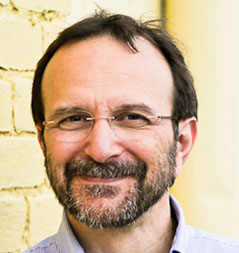TWiV reviews remarkable changes in the epidemiology of avian H5N1 influenza virus leading to previously uninfected areas, involvement of previously unaffected wild birds, and devastating outbreaks in farmed poultry, and isolation of a monoclonal antibody…
On this episode of TWiV, the observation that the 1918 influenza virus is not lethal in nonhuman primates and implications for studies on viral virulence, and mRNA vaccines that control and resolve human papillomavirus-associated cancers in mice.
Scott returns to TWiV to explain the development of an experimental mRNA vaccine that encodes hemagglutinin antigens against all known influenza A virus subtypes and influenza B virus lineages, and why he is worried about avian H5N1 influenza virus.
The TWiV team reveals a variant SARS-CoV-2 that emerged in deer with deer-to-human transmission, and hybrid virus particles produced by co-infection with influenza virus and respiratory syncytial virus particles.
TWiV reviews the genetic characterization of a new strain of type 2 oral polio vaccine and its implications for eradication, and how a polymorphism in humans comprising a single amino acid change in an antibody molecule regulates vaccine elicitation of broadly neutralizing antibodies against influenza virus HA.
From ASV 2022 in Madison, Wisconsin, TWiV speaks with Pamela Bjorkman and Andy Mehle about their careers and their research on influenza virus, HIV-1, SARS-CoV-2, and influenza virus.
TWiV revisits chronic wasting disease of cervids and the ability of the prions to infect meadow voles and raccoons, and the suggestion that stochastic assembly of influenza virus particles may play a role in phenotypic diversity.
TWiV explains how cap-snatching, the priming of viral mRNA synthesis with fragments of host mRNAs, can lead to the synthesis of novel viral proteins.
TWiV revisits Brazil’s rejection of Sputnik vaccine, examines influenza transmission via the air from the nasal epithelium of ferrets, and a history of accidental releases of polioviruses and their relevance for eradication of poliomyelitis.
The TWiVsters explain how the shape of pleomorphic virus particles – spherical or filamentous – determines the probability of virus attachment and fusion, and resistance to selective pressure such as antibodies that block cell entry.








